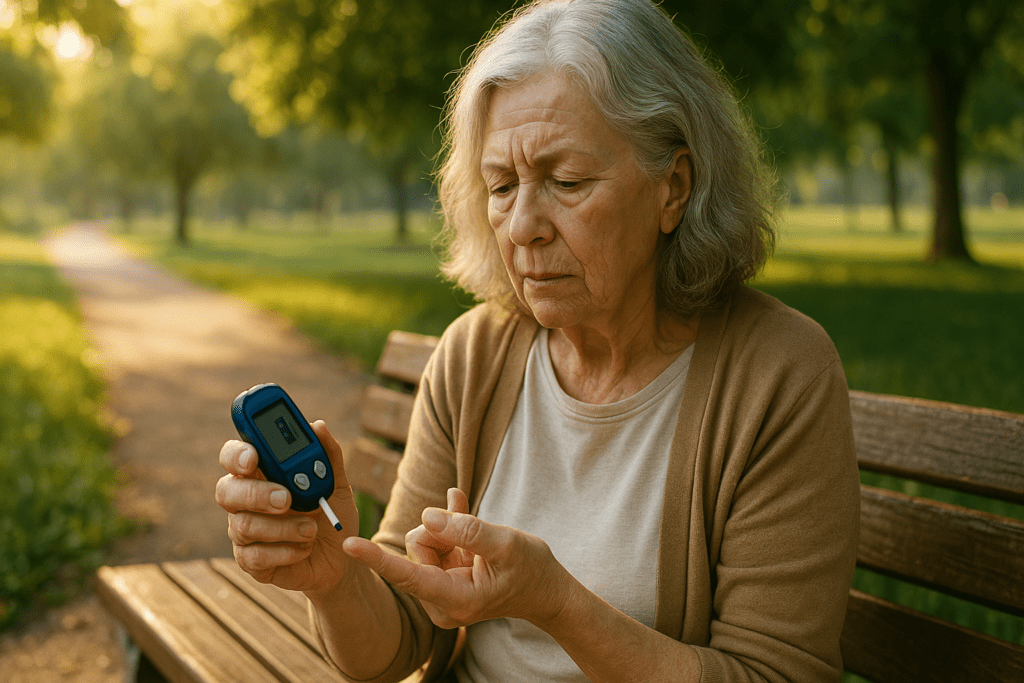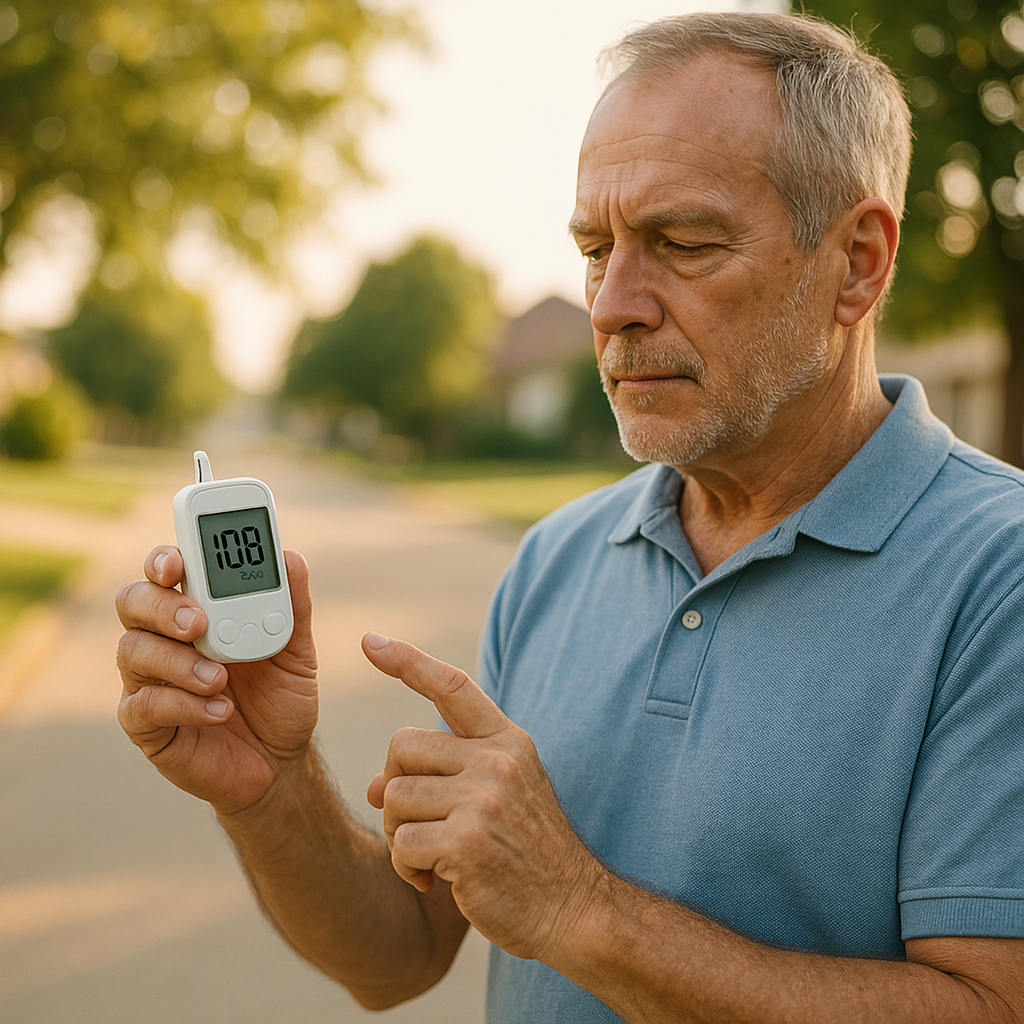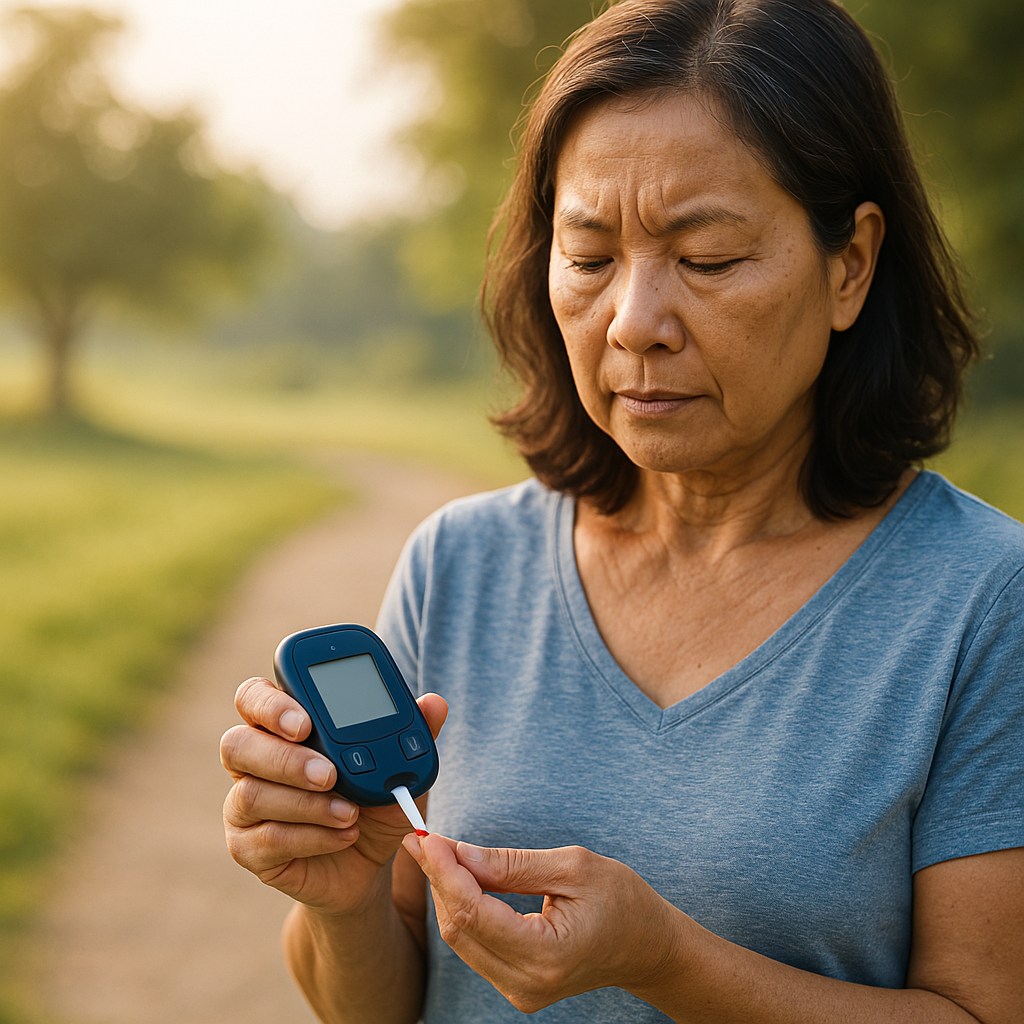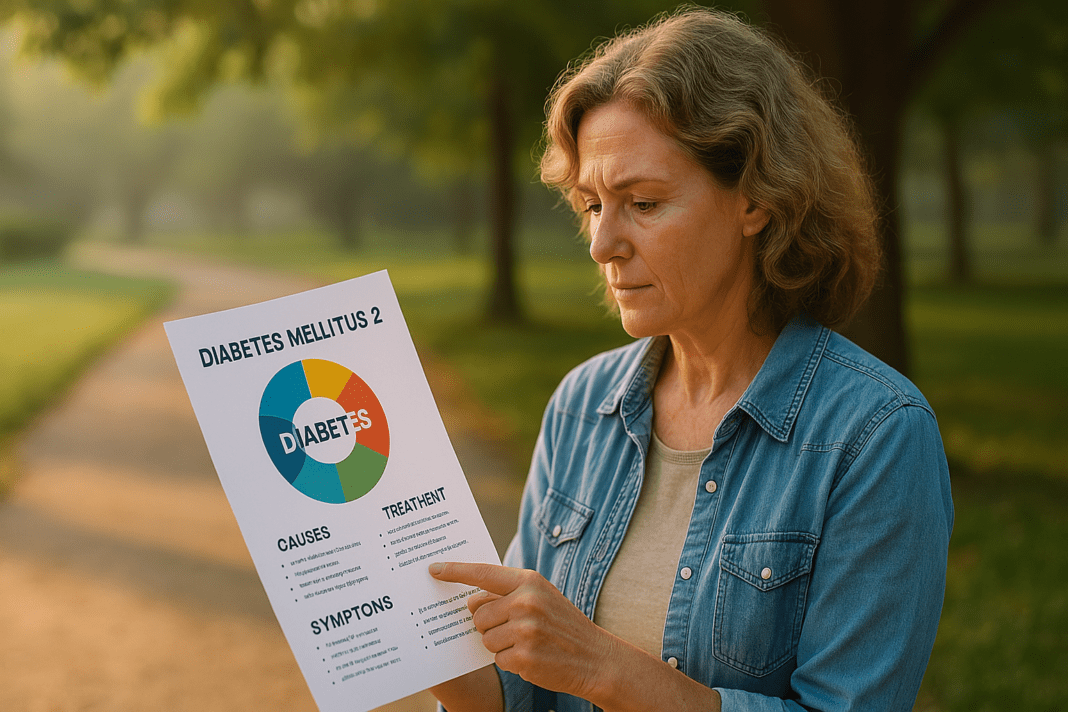Introduction: A New Era of Patient-Centered Diabetes Education
In the realm of chronic disease management, few conditions present as persistent and complex a challenge as type 2 diabetes. Affecting over 460 million people globally and steadily rising in prevalence, this metabolic disorder demands more than pharmacological intervention. Central to its long-term control is a robust and evolving approach to patient education. In recent years, research has underscored a seismic shift toward personalized, evidence-based strategies for patient teaching for diabetes mellitus type 2, marking a new frontier in chronic disease care. From digital health tools and culturally tailored programs to interdisciplinary education teams and behavior change theories, modern type 2 diabetes education is no longer just about transferring information—it’s about empowering individuals to take control of their health.
You may also like: Breakthroughs in Current Diabetes Research: What the Latest Studies Reveal About Treatment and Prevention
With mounting scientific data supporting innovative models of patient education, healthcare systems and practitioners are being urged to reimagine how knowledge is shared and behavior change is fostered. This article delves into the most significant breakthroughs in type 2 diabetes patient education, synthesizing the latest findings and offering actionable insights for clinicians, patients, and policymakers alike. We will explore how education delivery has evolved, which teaching modalities demonstrate superior outcomes, and why health literacy, cultural sensitivity, and technology integration are critical to the success of patient teaching for diabetes mellitus type 2.
Understanding the Complexity of Type 2 Diabetes Education
Patient education for diabetes mellitus type 2 encompasses far more than simply outlining dietary recommendations or explaining insulin regimens. It is an intricate process that involves not only imparting clinical knowledge but also addressing emotional, social, and psychological factors that influence a patient’s ability to manage their condition. Historically, education models were largely didactic, with healthcare providers delivering standardized information to passive recipients. Today, however, evidence suggests that this approach often falls short in achieving sustained glycemic control or improving patient outcomes.
One of the key challenges lies in the individualized nature of diabetes. What works for one patient may not work for another. Socioeconomic status, cultural beliefs, health literacy, coexisting mental health conditions, and even the presence of social support all impact a patient’s ability to absorb and apply health information. Therefore, effective type 2 diabetes patient teaching must be adaptive and multifaceted. Research has shown that patient-centered education, which tailors interventions to an individual’s readiness to learn and ability to act, yields better engagement and clinical outcomes than generic, one-size-fits-all instruction.
Healthcare professionals must now adopt a more holistic framework, one that incorporates motivational interviewing, problem-solving skills, and behavioral change theories such as the Transtheoretical Model and Social Cognitive Theory. By focusing on both the knowledge and the lived experience of the patient, type 2 diabetes education becomes a collaborative process grounded in trust and mutual respect.

Digital Tools Transforming Diabetes Education
Perhaps one of the most revolutionary shifts in recent years is the rise of digital health tools designed specifically for type 2 diabetes patient education. Mobile apps, virtual coaching platforms, telehealth consultations, and interactive e-learning modules have emerged as powerful complements to traditional in-person sessions. These tools allow patients to access information in real-time, track blood glucose trends, log dietary intake, receive medication reminders, and even engage in remote monitoring with healthcare providers.
Research from major clinical trials like the PREDICT-D study has shown that mobile-based education platforms can significantly improve glycemic control and self-management behaviors. One of the critical advantages of digital solutions is their scalability and accessibility. Patients who may otherwise struggle to attend in-person sessions due to geographic, financial, or mobility constraints can now participate in robust educational interventions from the comfort of their homes.
However, not all digital tools are created equal. The most effective platforms are those that combine clinical accuracy with user-friendly interfaces and culturally relevant content. When designing digital type 2 diabetes education tools, developers must collaborate with healthcare providers and patients to ensure usability and relevance. Furthermore, integrating behavior change techniques—such as goal setting, feedback loops, and gamification—has been shown to enhance patient motivation and adherence.
The Role of Cultural Competence in Effective Teaching
Cultural competence is increasingly recognized as a cornerstone of effective patient teaching for diabetes mellitus type 2. Studies have demonstrated that when education programs are tailored to reflect a patient’s cultural beliefs, language preferences, dietary practices, and socioeconomic realities, they are more likely to be embraced and retained. Cultural tailoring is not merely a gesture of inclusion; it is a clinical imperative that directly impacts adherence and health outcomes.
For example, interventions designed for Hispanic or South Asian populations have been shown to significantly improve dietary adherence and blood glucose control when delivered in the patient’s primary language and contextualized within traditional food customs. Similarly, African American patients have responded more positively to peer-led education programs that address systemic barriers and historical mistrust of medical institutions.
Incorporating cultural competence into type 2 diabetes patient education requires a proactive approach. Healthcare providers must receive training in cultural humility and develop the skills needed to engage with patients in a way that respects their worldview while promoting evidence-based practices. Moreover, involving community health workers or cultural liaisons in the education process can bridge communication gaps and enhance trust.
Health Literacy: The Foundation of Effective Education
At the heart of any successful educational intervention lies the concept of health literacy. Defined as the ability to obtain, process, and understand basic health information to make informed decisions, health literacy plays a pivotal role in type 2 diabetes management. Alarmingly, studies show that nearly half of U.S. adults have limited health literacy, with even higher rates among marginalized communities. This limitation severely undermines the effectiveness of traditional patient education models.
Improving health literacy requires more than simplifying language or printing brochures at a lower reading level. It demands a systemic approach that includes visual aids, teach-back methods, personalized goal-setting, and iterative feedback. In type 2 diabetes education, this might involve using diagrams to explain insulin action, role-playing to practice carb counting, or using analogies to illustrate blood sugar dynamics. The key is to ensure that patients truly grasp the material and can apply it in real-world settings.
Furthermore, healthcare institutions must embed health literacy principles into their educational protocols. This means assessing literacy levels at intake, customizing communication styles accordingly, and continuously evaluating comprehension throughout the care process. When health literacy is prioritized, patient teaching for diabetes mellitus type 2 transitions from a monologue to a dynamic exchange that empowers patients rather than overwhelms them.

Interdisciplinary Approaches and Team-Based Education
A growing body of evidence supports the efficacy of interdisciplinary, team-based models for type 2 diabetes patient education. These programs typically include a range of specialists such as endocrinologists, diabetes educators, registered dietitians, behavioral health counselors, and pharmacists. The goal is to provide patients with a 360-degree support system that addresses not only their physiological needs but also the psychological, nutritional, and social dimensions of disease management.
Collaborative care models like the Diabetes Self-Management Education and Support (DSMES) framework have demonstrated substantial improvements in HbA1c levels, medication adherence, and overall quality of life. In these settings, education is not a one-time event but a continuous process that evolves alongside the patient’s condition and circumstances.
One particularly promising development is the integration of behavioral health into diabetes education. Depression and anxiety are common among individuals with type 2 diabetes and can significantly impede self-management. By including mental health support in the educational framework, providers can address underlying barriers to behavior change and foster a more comprehensive healing environment.
Behavioral Science and the Psychology of Learning
Understanding how people learn and change behavior is fundamental to designing effective type 2 diabetes education programs. Behavioral science provides critical insights into motivation, habit formation, decision-making, and cognitive biases—all of which can either enhance or hinder self-care behaviors.
For instance, studies have shown that self-efficacy, or the belief in one’s ability to execute specific actions, is a strong predictor of diabetes self-management. Educational strategies that bolster self-efficacy—such as skill mastery, positive reinforcement, and peer modeling—are more likely to result in lasting behavioral change. Likewise, the concept of “implementation intentions,” or planning specific actions in response to situational cues, has been used effectively to promote adherence to dietary and medication regimens.
Incorporating these psychological principles into patient teaching for diabetes mellitus type 2 enhances both engagement and retention. Rather than overwhelming patients with dense information, educators are encouraged to break concepts into manageable chunks, use repetition and reinforcement, and create emotionally resonant learning experiences. By doing so, they align the educational process with the brain’s natural learning mechanisms.
Real-World Applications and Emerging Models
Around the world, innovative models of type 2 diabetes education are being piloted and implemented with promising results. One notable example is the use of group medical visits, where patients meet regularly with a multidisciplinary team and their peers to receive education, support, and medical evaluation. These visits foster community, reduce isolation, and allow for shared learning experiences that are often more impactful than solitary consultations.
Another emerging trend is the use of peer educators—individuals with lived experience managing type 2 diabetes who are trained to deliver education and support. Peer-led models have been particularly effective in underserved communities, where trust and relatability are paramount. In some programs, peer educators even conduct home visits or lead community workshops, thereby extending the reach of formal healthcare systems.
Hybrid models that blend in-person and digital education are also gaining traction. These programs allow for both structured instruction and on-demand access to resources, accommodating a wide range of learning styles and logistical needs. Early data suggests that such flexibility improves adherence and satisfaction among patients, particularly those with demanding work schedules or caregiving responsibilities.

Frequently Asked Questions (FAQ): Breakthroughs in Type 2 Diabetes Education
1. How is technology reshaping type 2 diabetes patient teaching in rural or underserved areas?
Recent advancements in telemedicine and mobile health (mHealth) applications have been game-changers for type 2 diabetes patient teaching in geographically isolated or medically underserved communities. These technologies enable real-time glucose tracking, virtual consultations, and interactive educational modules that bypass the need for in-person visits. Patients in rural areas often face barriers such as limited transportation and provider shortages; digital type 2 diabetes education bridges these gaps by delivering personalized, scalable solutions directly to smartphones or tablets. Additionally, many of these platforms are designed with low-literacy interfaces and culturally adapted content, ensuring accessibility for diverse users. This shift not only expands the reach of patient education for diabetes mellitus type 2 but also empowers individuals in remote regions to engage more confidently in self-care.
2. What role does family involvement play in improving outcomes in type 2 diabetes patient education?
Family dynamics significantly influence the success of type 2 diabetes patient education, especially in cultures where communal decision-making is the norm. Including family members in the education process has been shown to enhance accountability, emotional support, and adherence to lifestyle modifications. For example, when caregivers and partners understand carbohydrate counting, exercise routines, and medication management, they can reinforce healthy habits at home. Programs that incorporate family-centered patient teaching for diabetes mellitus type 2 often experience higher rates of engagement and long-term success. By making education a shared responsibility, families can transform their collective behavior and create a supportive environment for the patient.
3. How are educators addressing the emotional toll of a type 2 diabetes diagnosis in their teaching strategies?
Emotional resilience is an often-overlooked component of type 2 diabetes patient teaching. Educators are increasingly integrating psychological first aid and stress management techniques into type 2 diabetes education curricula. These may include mindfulness training, cognitive-behavioral strategies, and structured emotional check-ins that help patients process the fear, guilt, or anxiety associated with their diagnosis. By normalizing these emotional responses and providing tools to cope, patient education for diabetes mellitus type 2 evolves from a purely informational approach into a more holistic, therapeutic experience. This integration acknowledges the reality that emotional well-being is essential for long-term behavioral change and disease self-management.
4. What are some innovative teaching models beyond traditional clinical settings?
Community-based programs, such as barbershop initiatives, faith-based outreach, and workplace wellness clinics, are increasingly being utilized for type 2 diabetes patient education. These unconventional environments provide a familiar and comfortable backdrop for delivering culturally relevant information. By meeting people where they are, educators reduce stigma and increase trust, which is particularly impactful in populations that may distrust formal medical systems. Such models often involve lay health workers or trained peer educators who facilitate patient teaching for diabetes mellitus type 2 in a language and tone that resonates with the target audience. The success of these models suggests that effective education doesn’t have to be confined to hospitals or doctor’s offices.
5. How does financial literacy impact patient adherence to type 2 diabetes education plans?
Financial stress can significantly undermine even the most well-designed type 2 diabetes patient education programs. When patients are unable to afford glucometers, fresh produce, or prescribed medications, they may disengage from the treatment plan entirely. Forward-thinking educators now include financial counseling as part of comprehensive patient education for diabetes mellitus type 2. This might involve teaching patients how to navigate insurance plans, locate free community resources, or apply for medication assistance programs. Incorporating financial literacy into type 2 diabetes patient teaching helps patients develop realistic, sustainable management strategies that align with their economic circumstances.
6. Are there generational differences in how patients respond to type 2 diabetes education?
Yes, generational values and communication styles play a considerable role in the effectiveness of patient education for diabetes mellitus type 2. Older adults may prefer face-to-face sessions with printed handouts, whereas younger generations are often more responsive to interactive apps, videos, and text-based reminders. Furthermore, younger patients may value autonomy and data tracking tools, while older individuals might prioritize physician-guided decision-making. Recognizing and adapting to these generational preferences allows educators to personalize type 2 diabetes patient teaching more effectively. This level of customization fosters greater engagement and respect for individual learning preferences across age groups.
7. What emerging roles do pharmacists and non-traditional providers play in type 2 diabetes education?
Pharmacists and other non-traditional healthcare professionals are taking on expanded roles in patient teaching for diabetes mellitus type 2. As medication adherence becomes more closely tied to patient outcomes, pharmacists are being integrated into educational teams to counsel patients on side effects, drug interactions, and dosing schedules. Some retail pharmacies now offer walk-in diabetes management clinics, where patients can receive point-of-care testing and immediate educational feedback. These initiatives improve accessibility and make type 2 diabetes education more convenient, particularly for patients with limited access to primary care. Additionally, integrating pharmacists enhances interdisciplinary collaboration and ensures continuity of care.
8. Can patient advocacy play a role in shaping future type 2 diabetes education models?
Patient advocacy is emerging as a powerful force in shaping policies and practices around type 2 diabetes patient education. Advocates with lived experience offer insights that can inform program design, from identifying cultural blind spots to recommending user-friendly language. Their involvement ensures that type 2 diabetes patient teaching reflects the realities of those it aims to serve, rather than the assumptions of providers. Some advocacy groups even co-create curricula and participate in legislative efforts to secure funding for inclusive, community-based education programs. By giving patients a voice in the process, healthcare systems can foster trust and responsiveness in their educational outreach.
9. How can clinicians maintain motivation among patients over the long term?
Sustaining motivation is one of the biggest challenges in type 2 diabetes patient education. Clinicians are now using techniques from behavioral economics—such as commitment contracts, gamification, and social incentives—to help patients stay engaged. Periodic re-assessments, milestone celebrations, and personalized feedback loops can also maintain momentum. Embedding motivational strategies into patient teaching for diabetes mellitus type 2 reinforces the idea that progress is achievable and worth celebrating. Moreover, establishing a long-term relationship with educators or coaches helps patients feel seen, supported, and less likely to disengage during periods of burnout.
10. What future trends are likely to shape type 2 diabetes patient teaching in the next decade?
The next frontier in type 2 diabetes patient teaching will likely involve artificial intelligence (AI), precision medicine, and virtual reality (VR) simulations. AI-driven chatbots and digital coaches are already being tested to deliver real-time feedback and adapt content based on user behavior. Precision medicine will allow educators to tailor type 2 diabetes patient education even more closely to individual genetics, microbiome profiles, and lifestyle factors. Meanwhile, VR offers immersive simulations that can teach insulin administration, grocery shopping for low-glycemic foods, or even stress management in real-world scenarios. These technologies hold enormous promise for transforming patient education for diabetes mellitus type 2 into a more interactive, personalized, and effective experience.
Conclusion: Reimagining the Future of Type 2 Diabetes Patient Teaching
The landscape of type 2 diabetes patient education is undergoing a profound transformation, driven by scientific discovery, technological innovation, and a deeper understanding of human behavior. Gone are the days when static pamphlets and brief consultations could suffice. Today, effective patient education for diabetes mellitus type 2 is dynamic, personalized, culturally attuned, and grounded in interdisciplinary collaboration.
By embracing digital tools, fostering cultural competence, addressing health literacy, and integrating behavioral science, healthcare providers can empower patients to become active participants in their care. Moreover, emerging models such as group visits and peer-led education demonstrate that community-based approaches can complement clinical expertise and enhance outcomes.
As we continue to unravel the complexities of chronic disease management, one principle remains clear: education is not merely an adjunct to treatment but a foundational element of it. The breakthroughs in type 2 diabetes patient teaching outlined in this article offer a blueprint for the future—a future in which patients are not just informed, but inspired, equipped, and supported at every stage of their journey. With sustained investment, policy alignment, and clinical commitment, the promise of effective, equitable, and transformative type 2 diabetes education can be fully realized.
diabetes self-management education, glycemic control strategies, digital health tools for diabetes, culturally sensitive healthcare, chronic disease education, health literacy improvement, behavioral health in diabetes care, personalized diabetes programs, mobile apps for diabetes support, interdisciplinary diabetes care, mental health and chronic illness, rural healthcare access, family support in chronic disease, lifestyle modification for diabetes, diabetes care innovation, technology in patient education, community-based health education, emotional wellness in chronic illness, patient empowerment strategies, virtual diabetes coaching
Further Reading:
New Study Reveals Promising Findings to Treat Type 2 Diabetes
Knowledge about type 2 diabetes: its impact for future management
Type II diabetes mellitus: a review on recent drug based therapeutics
Disclaimer
The information contained in this article is provided for general informational purposes only and is not intended to serve as medical, legal, or professional advice. While MedNewsPedia strives to present accurate, up-to-date, and reliable content, no warranty or guarantee, expressed or implied, is made regarding the completeness, accuracy, or adequacy of the information provided. Readers are strongly advised to seek the guidance of a qualified healthcare provider or other relevant professionals before acting on any information contained in this article. MedNewsPedia, its authors, editors, and contributors expressly disclaim any liability for any damages, losses, or consequences arising directly or indirectly from the use, interpretation, or reliance on any information presented herein. The views and opinions expressed in this article are those of the author(s) and do not necessarily reflect the official policies or positions of MedNewsPedia.


